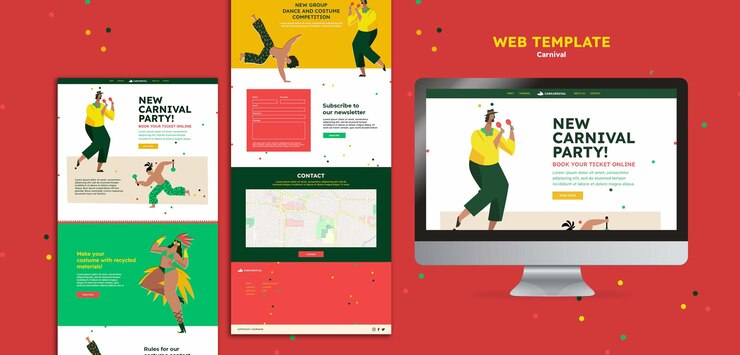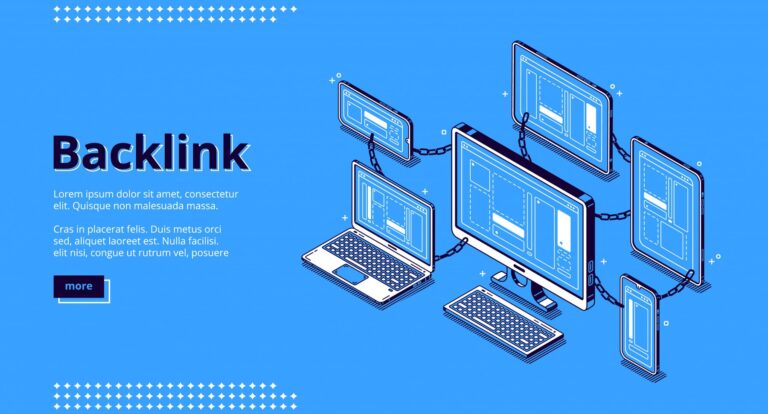Are you scratching your head trying to understand how to optimize your website for maximum visibility? You’re not alone. SEO is a tricky beast, but it can be tamed. While there are plenty of advanced SEO techniques for you to learn, you’ll want to start with the basics – on-page SEO.
On-page SEO is all about optimizing the elements on your website that are within your control. It’s not just about using the right keywords and meta tags; it’s also about creating an inviting and user-friendly page within a larger customer-driven context. In other words, it’s creating a “thinking” page.
We have compiled some simple yet powerful on-page SEO techniques that you should consider implementing in order to get your website seen by the right people. Keep reading and discover our top 10 go-to on-page SEO techniques that will set your website up for success!
Optimize Your Page URL and Use Keyword-Rich Domain Names
The first step to optimizing your on-page SEO is to make sure your page URL and domain name are keyword-rich. When it comes to choosing the right domain and page, you want to be sure that the words match up with your target keyword(s). This helps both search engines and users understand what the page is about.
At the same time, be sure to keep your URLs short and descriptive. Long, complicated URLs can negatively impact user experience, so it’s best to stick with shorter ones that are easier to remember. Moreover, be sure not to go overboard with keywords—Google will penalize you for keyword stuffing!
Have an SEO-Friendly Page Title With Your Primary Keyword
It’s a no-brainer: effective on-page SEO includes having an SEO-friendly page title. A title tag is the text that appears in the search engine result page when your URL is listed. You want to ensure that your page titles are short and descriptive, as this helps your page stand out among other options available to your readers.
You should always include your primary keyword in the beginning of the title and be sure not to forget about traditional SEO best practices such as avoiding duplicate titles, removing stop words from titles, and making sure your keywords appear within the first 65 characters of the title. This helps search engines index your content in the searcher’s favor. Additionally, it’s important to note that a good page title should attract clicks from potential customers who are searching for what you offer—so make sure it’s clear and concise enough so they can understand what your content is about quickly.
Include Your Main Keyword in the H1 Tag and in Headings
Did you know that you should include your main keyword in your page’s H1 tag and headings? This could be a great way to help search engines understand the context of your content and boost your page’s visibility.
The H1 tag is usually reserved for the main headline on your page, and it typically appears at the top of the page. By including your main keyword in this position, you’re giving both search engines and visitors a clear understanding of what the article is about.
It’s also important to include headings with relevant keywords scattered throughout your content. This practice can help show search engines that your content is authoritative on the subject matter you’re writing about, as well as provide an easier reading experience for visitors. Headings also create structure within the blog post and allow readers to easily find information they need right away.
When implementing this on-page SEO technique, keep in mind that keyword stuffing isn’t effective because it makes content difficult to read and could get you penalized by search engine algorithms. Instead, focus on using natural language which places emphasis on readability first, then try to include keywords where appropriate.
Have Lots of Relevant Content (At Least 500 Words)
If you want your website to rank, then you should definitely make sure that each and every page has at least 500 words of relevant content. If your content is too short, search engine bots won’t spend enough time on it to determine what your page is all about.
Google and other major search engines like to see longer pages – not only do they help ensure that the page contains the information users are looking for, but it also signals that the page is worth spending time on. That said, make sure all of the content on your pages is relevant and useful to your visitors.
You should also use more than just text when possible – include images, videos and other content that can be used to enhance the user experience. This will help keep visitors engaged with your website and ensures they remain loyal to your brand and come back often – it’s a win-win for you!
When creating content, aim for at least 500 words per page – this will give you enough space to cover all of the topics related to the page, as well as keep it interesting for visitors. Also, don’t forget to optimize this content with keywords so that search engine bots can better understand what the page is about. This can help increase rankings and help you gain more organic traffic from search engines.
Include Images and Alt Text With Keywords
The internet is a visual place, and if you want to be successful with SEO, images should play an important role in your content. Remember: what looks good to the eye also helps with search engine rankings.
Make sure to include images in your content that are relevant to the topic and have captivating titles. Additionally, be sure to also include relevant keywords in your alt text (the text used to describe the image). That way, search engine bots can crawl your images and associate them directly with the content on your page. Alt text will also help if visitors can’t see the image for any reason – they’ll still get some idea of what it should be.
You don’t want to overdo it with keywords though — choose just one or two that best describe the image and use them in a natural-sounding way. This is a simple yet powerful SEO technique that can make a big difference when used correctly — just remember balance is key!
Use Your Keywords in Page Content but Don’t Overoptimize
Another on-page SEO technique you can’t miss is using your keywords within the page content—but don’t overdo it! This means that you should include your target keyword in the page copy but don’t stuff it—remember, quality over quantity. Where you should add these keywords depends on the type of page you’re creating:
- For blog posts, add your keyword to the post title, subheadings, meta description and throughout the body text.
- For product pages, include it in the title and body text.
- For Landing pages, include it in the headline and CTAs.
- For About Us pages, incorporate your keyword into a few sentences here and there throughout the copy.
- For category pages, insert your target keyword into each subheading as well as into a few sentences of content on each page.
This way, when users are searching for terms related to your business topic or product they’ll be more likely to come across relevant content that includes your target keywords—and that’ll help build trust and credibility with potential customers!
Make Your Site Mobile-Friendly With Responsive Design
It’s not just what you write, but how you present it that counts when it comes to SEO. That’s why having a mobile-friendly website with responsive design is key.
Simply put, responsive design ensures that your website adapts to the device it’s being viewed on—so whether someone is looking at your page on a mobile phone, laptop or tablet, they’ll have the same great experience.
This kind of functionality allows you to reach more people and make sure they have a positive experience no matter the device. And when it comes to SEO success, that matters: Google rewards sites that have mobile-friendly designs and penalizes those without them. You can use Mobile-Friendly Test by Google to see how easily a visitor can use your page on a mobile device.
Don’t miss out on an opportunity for more visibility and leads by skipping this important step! Here are some tips for making sure your site is optimized for mobile devices:
- Prioritize loading speed: if readers have to wait too long for your page to load, they are likely to click away in frustration
- Use resized images: large images can slow down loading times significantly, so make sure yours aren’t too big
- Make text easy to read: use fonts that are easy to read on any device and tweak font size accordingly
- Optimize navigation menus: make sure your menu is simple enough so users can easily find what they’re looking for regardless of their device type.
Have a Fast Loading Page Speed
One of the most important on-page SEO techniques you should be implementing for your website is page speed. You want to make sure that your pages load quickly, as page loading speed has become a major ranking factor for Google.
If you have a slow loading page, Google will deem it as less relevant than faster websites. This affects not only your rankings but also user experience, as no one wants to wait more than a few seconds for a page to load.
Fortunately, there are some simple yet powerful ways to ensure that your page loading speed is up to standard, including:
- Compressing images
- Optimizing JavaScript and HTML codes
- Minimizing HTTP requests
- Putting CSS at the top and JavaScript at the bottom of the code
- Leveraging browser caching
- Reducing server response time
- Using a content delivery network (CDN)
With just a few small changes and tweaks, you can make sure that your pages are loading quickly and efficiently—without sacrificing esthetics or user experience—so that they rank better in Google’s search engine results pages (SERPs).
Use Internal Linking to Pass Link Juice to Other Pages
Internal linking is an essential technique to help link various pages on your website together. The main advantages of internal linking are twofold. First, it helps users navigate your website and find related pages they may be interested in. Second, it helps pass link juice from one page to another.
If a page on your website has lots of incoming links from other authoritative websites, you can use the extra link juice to boost the SEO of the related pages on your site by adding links from those pages back to the authority page. This is helpful for boosting rankings for related content and keywords without having to build additional links to those pages.
You can also use internal linking for keyword targeting by using anchor text that contains a related keyword you want to rank for in order to pass more link juice and generate a greater SEO impact.
So, whenever you create new content or update old content, remember to add internal links wherever appropriate so that you can help boost the rankings of other important pages on your website.
Update Content Regularly to Improve Rankings
You may not know this, but one of the best and most simple SEO techniques is to update content regularly. Here’s why: crawling bots can detect if a website is regularly refreshing its content. This signals to the search engine that your website is actively maintained and increases your chance of getting a better ranking. Plus, the more you update your content, the more keywords that can be indexed by search engine algorithms, so you definitely want to prioritize this technique.
But wait—there’s more…if you’re updating your content regularly then you have even more opportunity to optimize for specific keywords, use internal linking to other pages and posts on your site, as well as post new links for back-linking.
Here are some tips on how to successfully update content:
- Keep track of how often you post new updates, and create a schedule if possible.
- Refresh existing page or post content instead of creating brand new ones all the time – this helps prevent duplicate content issues which could damage your SEO efforts.
- Update with fresh links as much as possible – this helps with keeping up relevance and helping search engines find new pages quickly.
- Take advantage of social media platforms to share updates – this can help increase visibility to search engine crawlers!
By following these on-page SEO techniques, you’ll be well on your way towards seeing better rankings in no time at all!
Conclusion
Optimizing a website’s on-page search engine ranking is essential to any modern digital marketing strategy. With the right on-page SEO techniques, you can maximize a website’s visibility and reach on search engines.
From keyword research and content optimization to title tags and meta descriptions, there are a number of simple yet powerful techniques you can use to increase your website’s ranking. Implementing these techniques will help your website become more visible and attract more organic traffic.
SEO is a continuous process and requires regular monitoring, maintenance and optimization. But with the right on-page SEO techniques, you can make sure that your website is up-to-date with the latest trends and is reaching its full potential. Use these techniques, and you’ll be on your way to boosting your website’s visibility and improving your search engine optimization.








